| Oh My God! | |
|---|---|
 | |
| Developer(s) | Atlus |
| Publisher(s) | Atlus |
| Platform(s) | Arcade Game |
| Release | 1993 |
| Genre(s) | Puzzle game |
| Mode(s) | Single-player, multiplayer |
Oh My God! is an arcade puzzle game from Atlus. The gameplay is similar to Dr. Mario .
| Oh My God! | |
|---|---|
 | |
| Developer(s) | Atlus |
| Publisher(s) | Atlus |
| Platform(s) | Arcade Game |
| Release | 1993 |
| Genre(s) | Puzzle game |
| Mode(s) | Single-player, multiplayer |
Oh My God! is an arcade puzzle game from Atlus. The gameplay is similar to Dr. Mario .
A sequence of snakes made of colored balls fall down into the playing field. The object of the game is to manipulate the direction of these snakes, by using the joystick, in order to form a line of 3 colored balls vertically, horizontally, or diagonally. The game ends when the playing field tops out, that is, when there is no room for a new snake to enter the playing field. Levels are cleared by obtaining a set number of points. Gameplay gets progressively more difficult in later levels as snakes fall at greater rates, and new colors are introduced.
Oh My God! was released in 1993 as a conversion kit rather than as a stand-alone game and was marketed only in Japan. Though it is available as a M.A.M.E. ROM, it is rated on a commonness scale of 1 to 100 as a 1, making it among the rarest of games. There are only four known instances of the game circuit boards owned by collectors, there are no known examples of assembled, functional units. [1]
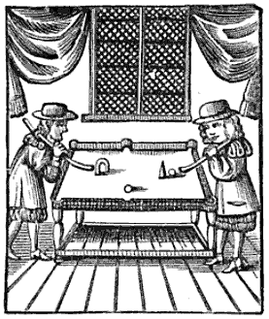
Cue sports are a wide variety of games of skill played with a cue, which is used to strike billiard balls and thereby cause them to move around a cloth-covered table bounded by elastic bumpers known as cushions.

SameGame (さめがめ) is a tile-matching puzzle originally released under the name Chain Shot! in 1985 by Kuniaki Moribe (Morisuke). It has since been ported to numerous computer platforms, handheld devices, and even TiVo, with new versions as of 2016.

Dr. Mario is a 1990 action puzzle video game produced by Gunpei Yokoi and designed by Takahiro Harada. Nintendo developed and published the game for the Nintendo Entertainment System and Game Boy consoles. The game's soundtrack was composed by Hirokazu Tanaka.

Lemmings is a puzzle–strategy video game originally developed by DMA Design and published by Psygnosis for the Amiga in 1991 and later ported for numerous other platforms. The game was programmed by Russell Kay, Mike Dailly and David Jones, and was inspired by a simple animation that Dailly created while experimenting with Deluxe Paint.
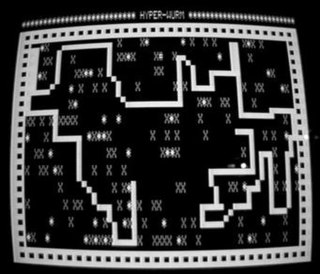
Snake is a video game genre where the player maneuvers a growing line that becomes a primary obstacle to itself. The concept originated in the 1976 two-player arcade game Blockade from Gremlin Industries, and the ease of implementation has led to hundreds of versions for many platforms. 1982's Tron arcade game, based on the film, includes snake gameplay for the single-player Light Cycles segment. After a variant was preloaded on Nokia mobile phones in 1998, there was a resurgence of interest in snake games as it found a larger audience.

Connect Four is a two-player connection board game, in which the players choose a color and then take turns dropping colored tokens into a seven-column, six-row vertically suspended grid. The pieces fall straight down, occupying the lowest available space within the column. The objective of the game is to be the first to form a horizontal, vertical, or diagonal line of four of one's own tokens. Connect Four is a solved game. The first player can always win by playing the right moves.

Yoshi, known as Mario & Yoshi in PAL regions, is a puzzle video game developed by Game Freak and published by Nintendo. It was released for the NES and Game Boy platforms. Both versions were first released simultaneously in Japan on December 14, 1991, and released in all other regions the following year.

Conker's Bad Fur Day is a 2001 platform game developed and published by Rare for the Nintendo 64. The game follows Conker, a greedy, hard-drinking red squirrel who must return home to his girlfriend. Most of the game requires the player to complete a linear sequence of challenges that involve jumping over obstacles, solving puzzles, and fighting enemies. A multiplayer mode where up to four players can compete against each other in seven different game types is also included. It is the second installment in the Conker series, after Conker’s Pocket Tales.

Metal Gear Solid 3: Snake Eater is a 2004 stealth game developed by Konami Computer Entertainment Japan and published by Konami. It was released in late 2004 in North America and Japan, then in early 2005 in Europe and Australia, originally for the PlayStation 2. It was the fifth Metal Gear game written and directed by Hideo Kojima and serves as a prequel to the entire Metal Gear series. An expanded edition, titled Metal Gear Solid 3: Subsistence, was released in Japan in late 2005, then in North America, Europe and Australia in 2006. A remastered version of the game was later included in the Metal Gear Solid HD Collection for the PlayStation 3, PlayStation Vita and Xbox 360, while a reworked version, titled Metal Gear Solid: Snake Eater 3D, was released for the Nintendo 3DS in 2012.
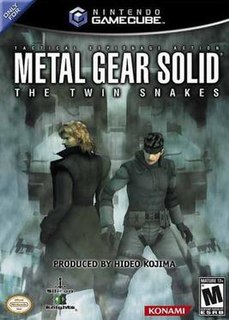
Metal Gear Solid: The Twin Snakes is a 2004 stealth game co-developed by Konami Computer Entertainment Japan and Silicon Knights and published by Konami for the GameCube. Released in March, the game is a remake of Metal Gear Solid, originally developed by Konami Computer Entertainment Japan for the PlayStation in 1998.

Snake Rattle 'n' Roll is a platform video game developed by Rare. It was published by Nintendo and released for the Nintendo Entertainment System in North America in July 1990 and in Europe on March 27, 1991. The game features two snakes, Rattle and Roll, as they make their way through eleven 3D isometric levels. A Mega Drive version was released by Sega in June 1993 with an extra level. Snake Rattle 'n' Roll was developed by Rare members Tim Stamper and Mark Betteridge. The music was composed by David Wise and was inspired by "Shake, Rattle and Roll" and other 1950s-era songs.

Yu-Gi-Oh! The Falsebound Kingdom is the only GameCube game in the Yu-Gi-Oh! series.

Puzzle de Pon! is a puzzle video game made by Visco Corporation in 1995. It was initially released for the Neo Geo arcade platform.
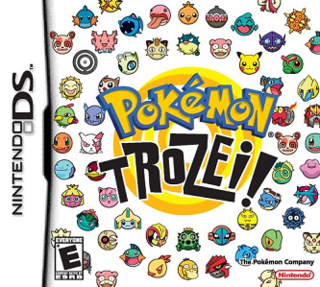
Pokémon Trozei!, released as Pokémon Link! in Europe, is a Pokémon-themed puzzle video game for the Nintendo DS. It was released in Japan on October 20, 2005, in North America on March 6, 2006, in Australia on April 28, 2006, and in Europe on May 5, 2006. Trozei is a stylized romanization of its Japanese title Torōze, meaning "Let's get/take (Pokemon)".
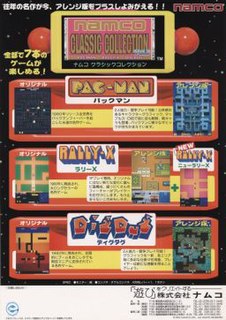
Namco Classic Collection Vol. 2 is a 1996 compilation arcade game developed and published by Namco. It is a collection of four of Namco's popular games: Pac-Man (1980), Rally-X (1980), New Rally-X (1981) and Dig Dug (1982). Alongside the original games, three new "Arrangement" games based on each game are included.

Zuma is a 2003 tile-matching puzzle video game developed by Oberon Media and published by PopCap Games. It was released for a number of platforms, including PDAs, mobile phones, and the iPod.

Senkyu (戦球), known as Battle Balls in English, is an arcade puzzle game created by Seibu Kaihatsu and released in 1995. A version for the Sony PlayStation was later released in limited quantities for the Japanese market and is now extremely rare. A demo version of the game was also included in the PlayStation release of Raiden DX.

Dr. Mario Express, known in PAL regions as A Little Bit of... Dr. Mario, is a Mario action puzzle video game published by Nintendo. The game was released as a DSiWare title for the Nintendo DSi platform. Dr. Mario Express was released as a launch title for the DSiWare service in Japan on December 24, 2008, and was released in both North America and PAL regions in 2009. The game was developed by Arika, which had also created Dr. Mario Online Rx for WiiWare.
Let's! TV Play Classic is a series of Japan-only plug & play devices developed and distributed by Bandai programmed on XaviX software created by SSD Company Limited in 2006 that contain arcade games from either Namco or Taito, with Namco's being called "Namco Nostalgia" while Taito's are called "Taito Nostalgia". Each device in the series contains 4 games, with 2 being classic arcade games while the other 2 are new games using the original game's sprites developed by Bandai.
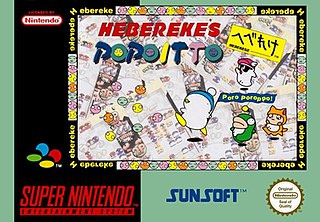
Hebereke's Popoitto is a puzzle-type video game in the Hebereke series developed by Sunsoft for the Sega Saturn, PlayStation and SNES consoles. Although released in Japan and Europe during 1995 and 1996, it was never released in North America. The gameplay is reminiscent to video game titles like Dr. Mario and Puyo Puyo. Hebereke's Popoitto received generally positive reviews, and was mostly recommended for fans of the puzzle genre.